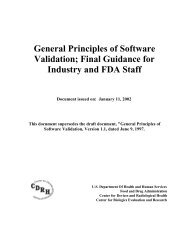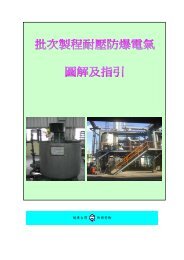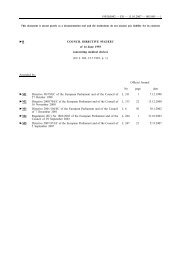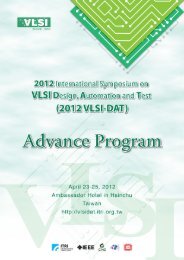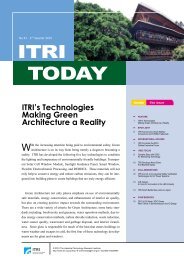Design Control Guidance - Food and Drug Administration
Design Control Guidance - Food and Drug Administration
Design Control Guidance - Food and Drug Administration
You also want an ePaper? Increase the reach of your titles
YUMPU automatically turns print PDFs into web optimized ePapers that Google loves.
Qualifications. Formal design reviews should be conducted by person(s) having technicalcompetence <strong>and</strong> experience at least comparable to the developers. For a smallmanufacturer, this may require that an outside consultant be retained to participate in theevaluation of the design.A manufacturer will often employ one or more specialists to conduct certain types ofspecialized assessments which are beyond the capabilities of the designers. For example, amechanical engineer may be retained to perform a structural analysis of a design, <strong>and</strong>perhaps conduct vibration testing to verify its performance under stress. Such specialistsmay be assigned to participate in the formal design review. Alternatively, they may beassigned to make an independent assessment <strong>and</strong> submit observations <strong>and</strong>recommendations to the reviewers. Either approach is valid.Types of expertise required. Many medical device designs involve a number oftechnologies, such as electronics, mechanics, software, materials science, or pneumatics.In addition, a variety of clinical <strong>and</strong> manufacturing issues may influence the design.Manufacturers should carefully consider which interests should be represented at formaldesign reviews. Subtle distinctions in reviewer perspective may have dramatic impact ondevice quality. For example, the marketing department of a small manufacturer shared anew design with several surgeons on their advisory board. The surgeons all thought thedesign was terrific. Subsequently, the manufacturer invited two experienced operatingroom nurses to participate in the final design review. During the course of the review, itbecame apparent that while surgeons may be the customers, nurses are the primary usersof the device, <strong>and</strong> no one up to that point had consulted with any nurses. The nurses at thedesign review didn’t like some of the features of the design. After some further marketsurvey, the manufacturer decided to make changes to the design to accommodate theseconcerns. It was unfortunate (<strong>and</strong> expensive) in this case that the user requirements werenot considered until late in the development cycle, but the design review was ultimatelyvery successful.Independence. The formal design review should include at least one individual who doesnot have direct responsibility for the design stage under review. In a small company,complete independence is very difficult to obtain. Within the context of formal designreviews, the practical solution is simply to ensure a fresh perspective, based on theprinciple that those who are too close to the design may overlook design errors. Thus,reviewers will often be from the same organization as the developers, but they should nothave been significantly involved in the activities under review. As discussed in thefollowing section, the formal design review procedures play a large role in assuringindependent <strong>and</strong> objective reviews.DESIGN REVIEW PROCEDURES. The manufacturer should have documented formaldesign review procedures addressing the following:• Evaluation of the design (including identification of concerns, i.e., issues <strong>and</strong>potential problems with the design)• Resolution of concernsSection E. <strong>Design</strong> Review 3/11/97 Page 26



